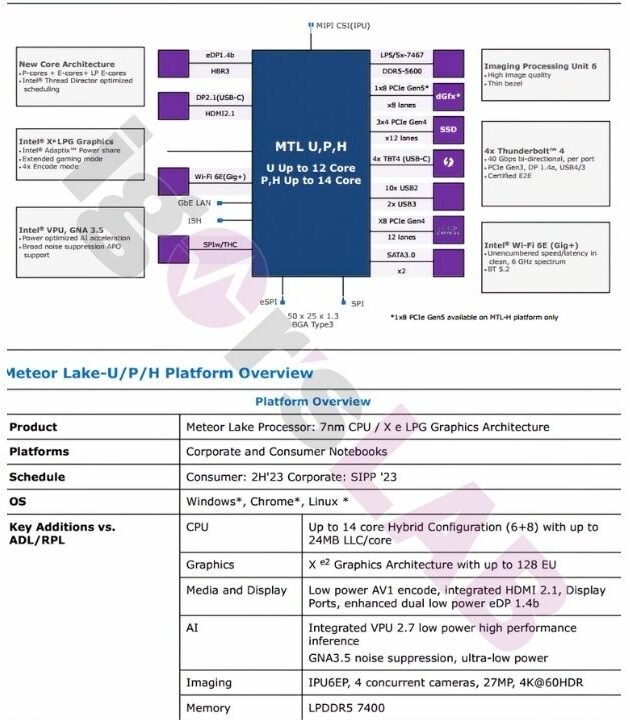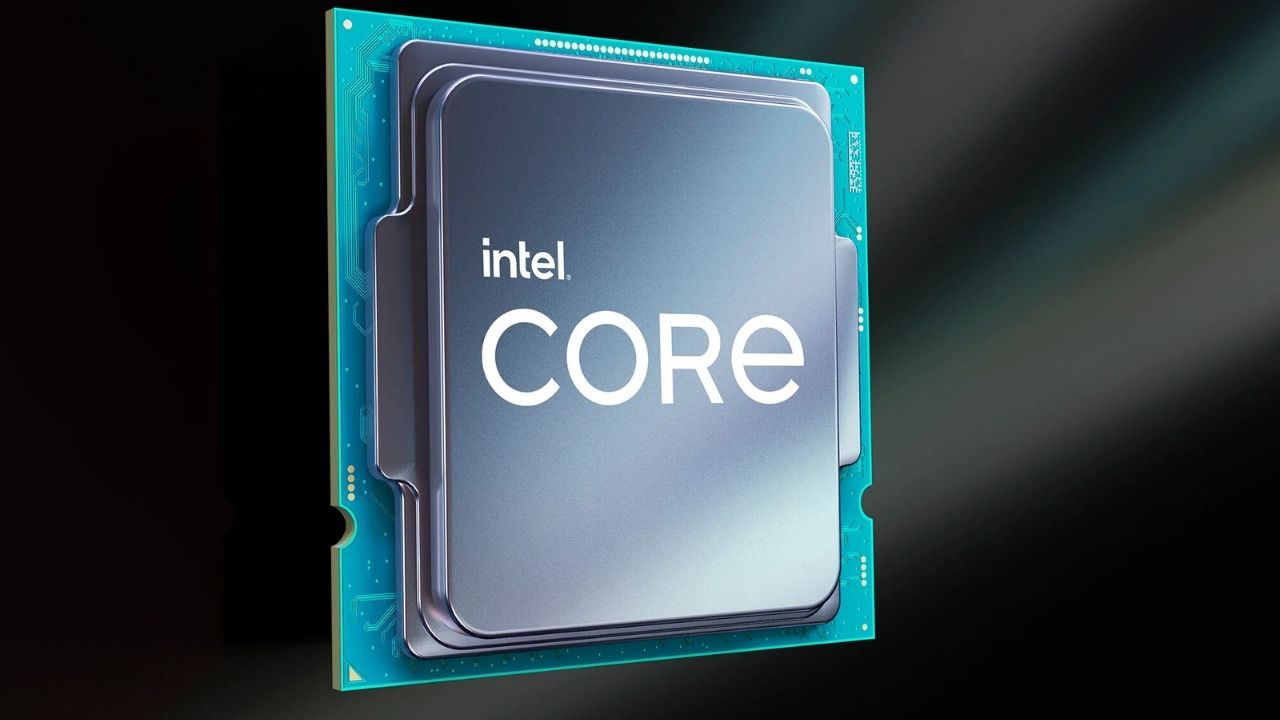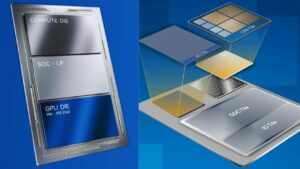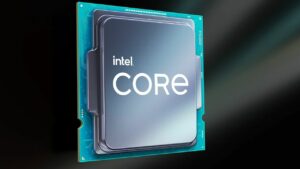Intel’s 14th generation Meteor Lake processors are scheduled for launch in the second half of 2023, starting with the mobile product line. The CPUs are set to compete against AMD’s Phoenix Point and Dragon Range in the mobile series and Raphael in the desktop segment.
Igor’sLAB posted Intel’s platform overview diagram for the 14th Gen Core mobile CPU series. The charts provide more details about the previously less known Meteor Lake product series. It also reveals further exciting information about the U, P, and H models, which can thus probably be regarded as confirmed.
Intel is going to use Performance(P) and Efficiency(E) cores in its 13th gen Raptor Lake series, similar to the Alder Lake series. However, Meteor Lake will feature a combination of P, E, and LP E-cores. LP E probably means Low Power Efficient cores, which confirms the rumors about ultra-low-power small cores, which have been circulating for a while.
@OneRaichu notes that the P and E cores are implemented in the compute tile while the LP E-cores are implemented in the SoC tile, whose count is limited to two.
Meteor Lake-P and Meteor Lake-H feature 14 cores, while the low-end Meteor Lake-U will have a maximum of 12 cores. The new architecture features 96 GB DDR5-5600 or up to 64 GB LPDDR5/LPDDR5X-7467 memory type, an improvement over DDR4/LPDDR4(X).

The slide also mentions a new Intel Xe-LPG graphics architecture based on Xe². The iGP will have up to 128 Execution Units, putting it toe to toe with Ryzen 7000. We still don’t know much about this new graphics architecture. However, it might be the rumored next-gen Battlemage architecture.
Coming to discrete graphics, the Meteor Lake series will offer up to 8 lanes for the PCIe Gen5 interface, but this feature will be exclusive to the H (gaming) Meteor Lake mobile CPUs, so the U and P models probably rely on Gen 4 at most.
All this information is regarding Meteor Lake’s mobile variants, as we are still waiting for more information regarding the desktop variants. So far, the specs are pretty exciting, and Intel, in theory, should be successful with its 14th Gen lineup if it sticks to the release schedule without further delays.
| Intel 14th Generation Core Series | Meteor Lake-H | Meteor Lake-P | Meteor Lake-U |
| Process node | Intel 4 (7nm EUV) | Intel 4 (7nm EUV) | Intel 4 (7nm EUV) |
| Core (maximum) | 16 (6P + 8E) + 2LPE (SoC) | 16 (6P + 8E) + 2LPE (SoC) | 12 (4P + 8E) + 2LPE (SoC) |
| GPU architecture | Xe-LPG (Xe2) | Xe-LPG (Xe2) | Xe-LPG (Xe2) |
| GPU execution unit (maximum) | 128 | 128 | 128 |
| Memory support | DDR5-5600 (96GB) LPDDR5 (X) -7467 (64GB) | DDR5-5600 (96GB) LPDDR5 (X) -7467 (64GB) | DDR5-5600 (96GB) LPDDR5 (X) -7467 (64GB) |
| I / O | PCIe Gen5 x8 PCIe Gen4 x24 4x Thunderbolt 4 | PCIe Gen4 x24 4x Thunderbolt 4 | PCIe Gen4 x24 4x Thunderbolt 4 |
| Release | 2H 2023 | 2H 2023 | 2H 2023 |
About Intel
Intel Corporation is an American multinational corporation and technology company headquartered in Santa Clara, California, in Silicon Valley. It is the world’s largest semiconductor chip manufacturer on the basis of revenue, and is the developer of the x86 series of microprocessors – the processors found in most personal computers (PCs).
Incorporated in Delaware, Intel ranked No. 46 in the 2018 Fortune 500 list of the largest United States corporations by total revenue.








No Comments on Intel’s Meteor Lake-H/P/U to Feature New Low Power Efficient Cores